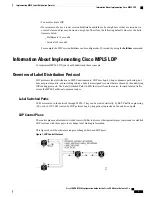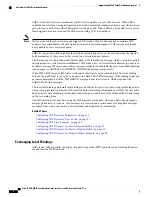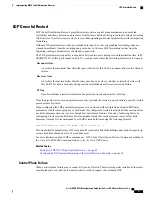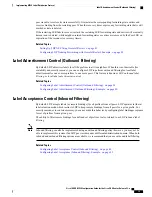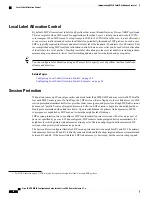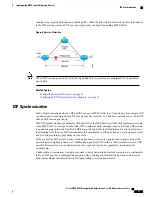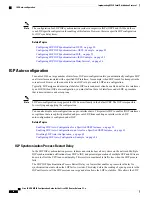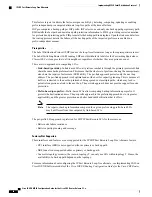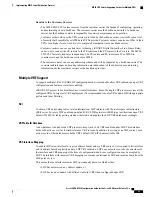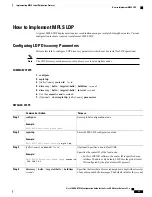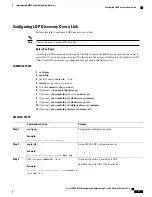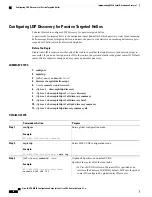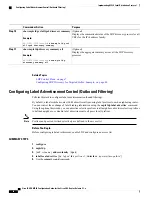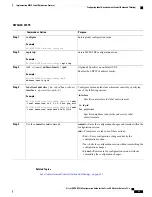
Related Topics
Configure IP LDP Fast Reroute Loop Free Alternate: Examples, on page 84
Verify IP LDP Fast Reroute Loop Free Alternate: Example, on page 86
Downstream on Demand
This Downstream on demand feature adds support for downstream-on-demand mode, where the label is not
advertised to a peer, unless the peer explicitly requests it. At the same time, since the peer does not automatically
advertise labels, the label request is sent whenever the next-hop points out to a peer that no remote label has
been assigned.
To enable downstream-on-demand mode, this configuration must be applied at mpls ldp configuration mode:
mpls ldp downstream-on-demand with ACL
The ACL contains a list of peer IDs that are configured for downstream-on-demand mode. When the ACL is
changed or configured, the list of established neighbors is traversed. If a session's downstream-on-demand
configuration has changed, the session is reset in order that the new down-stream-on-demand mode can be
configured. The reason for resetting the session is to ensure that the labels are properly advertised between
the peers. When a new session is established, the ACL is verified to determine whether the session should
negotiate for downstream-on-demand mode. If the ACL does not exist or is empty, downstream-on-demand
mode is not configured for any neighbor.
For it to be enabled, the Downstream on demand feature has to be configured on both peers of the session. If
only one peer in the session has downstream-on-demand feature configured, then the session does not use
downstream-on-demand mode.
If, after, a label request is sent, and no remote label is received from the peer, the router will periodically
resend the label request. After the peer advertises a label after receiving the label request, it will automatically
readvertise the label if any label attribute changes subsequently.
Related Topics
Configuring LDP Downstream on Demand mode, on page 66
MPLS LDP Carrier Supporting Carrier for Multiple VRFs
The carrier supporting carrier (CSC) support for MPLS LDP feature enables MPLS label distribution protocol
(LDP) to provide CSC support for Layer 3 Virtual Private Networks (L3VPN). To support LDP as label
distribution protocol between PE-CE devices in an MPLS CSC L3VPN, LDP is required to operate in multiple
Virtual Private Network routing and forwarding (VRF) contexts.
MPLS Carrier Supporting Carrier L3VPN: Introduction
The carrier supporting carrier feature enables one MPLS VPN-based service provider to allow other service
providers to use a segment of its backbone network. The service provider that provides the segment of the
backbone network to the other provider is called the
backbone carrier
. The service provider that uses the
segment of the backbone network is called the
customer carrier
.
A backbone carrier offers Border Gateway Protocol and Multiprotocol Label Switching (BGP/MPLS) VPN
services. The customer carrier can be either:
Cisco IOS XR MPLS Configuration Guide for the Cisco CRS Router, Release 5.1.x
21
Implementing MPLS Label Distribution Protocol
Downstream on Demand

